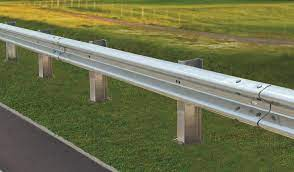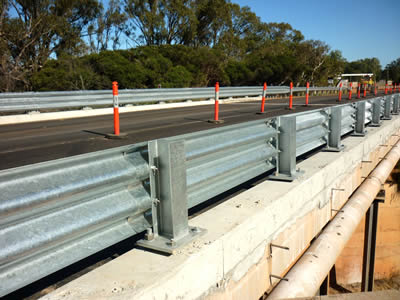
Bridge railings are guardrail systems designed to prevent people or vehicles from falling off the bridge. They can be made of concrete or steel.
Guardrails for bridges are located prominently to make the public stay alert and safe during their drive through bridges. These railings not only keep the traffic within the boundaries but also improve the bridge aesthetics.
This article mentions the different types of bridge railings and their features.
Types of Bridge Railings
The common types of railings used for bridges are:
1. Steel bridge railings
2. W-Beam railings
3. Thrie-Beam railings
4. Concrete beam railings
1. Steel Bridge Railings
Steel railings come in different cross-sections and designs. The most common type of steel bridge rail is a tubular rail system. These types of railings can be built alone or integrated into the concrete curb or on a low barrier wall.
For bridges with low-vehicular traffic and for pedestrians, architectural steel railings are commonly used. Architecturally important bridges do not have a bulky and heavy design. They incorporate decorative railings without compromising pedestrian safety.
2. W-Beam Bridge Railings
W-Beam railings are used for bridges with less traffic. As shown in the figure-2, W-Beam railings have a two-wave design and are attached to steel posts or truss girders. W-Beam is a simple steel railing system that can be designed for higher strength.
 W-Beam Railing System
W-Beam Railing System
Figure-1: W-Beam Railing System
3. Thrie Beam Bridge Railings
 Figure-2: Thrie Beam Rail System
Figure-2: Thrie Beam Rail SystemThrie beams are high-strength guard rail systems designed for highways, especially on sharp curves and slopes. Unlike W-Beams, thrie beam rail features a three-wave cross-sectional design and has excellent tensile strength and anti-corrosion properties.
Thrie beam rail systems can absorb the impact of out-of-control vehicles and guide them to a safer stop. These rail systems provide excellent performance and versatility.
4. Concrete Bridge Railings
Concrete is the most common material used for bridge construction. Concrete railings are attached to the bridge’s deck slab to create a strong vehicle barrier. Concrete railings are the best choice for urban locations or bridges that receive heavy truck loads.
The initial construction cost of concrete railings is high. Huge concrete railings in some situations can impede an open road view. In such situations, concrete railings with high strength can be combined with a tubular railing system.
FAQs
What are the types of bridge railings?
The common types of railings used for bridges are:
1. Steel bridge railings
2. W-Beam railings
3. Thrie-Beam railings
4. Concrete beam railings
What are W-Beam bridge railings?
W-Beam railings have a two-wave design and are attached to steel posts or truss girders. It is a simple steel railing system that can be designed for higher strength.
What are thrie-beam bridge railings?
Thrie beam rail features a three-wave cross-sectional design and gains excellent tensile strength and anti-corrosion properties.
Sources: Theconstructor





